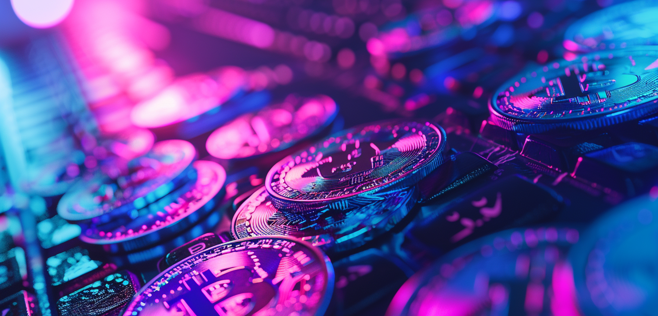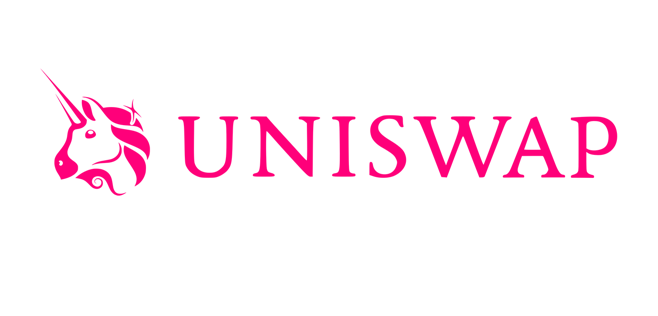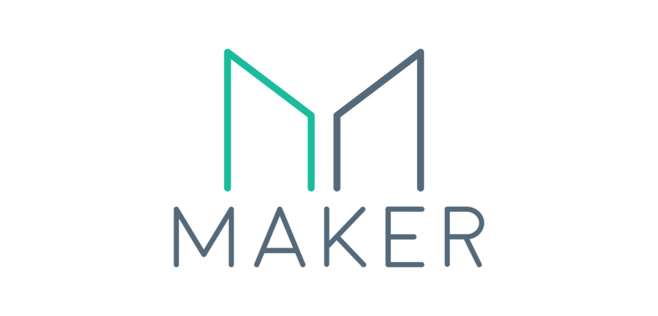Published 09 Jul 2024
Ratex.ai/
- Blog/
- DAOs/
- DAO Funding and Tokenomics: Understanding Treasury Management and Token Distribution
DAO Funding and Tokenomics: Understanding Treasury Management and Token Distribution

Decentralized Autonomous Organizations (DAOs) represent a transformative approach to organizational governance, leveraging blockchain technology to create decentralized, transparent, and community-driven entities. Unlike traditional organizations, DAOs operate without centralized leadership, relying on smart contracts and collective decision-making to manage operations. This innovative model has garnered significant attention and adoption across various sectors, from finance to technology and beyond.
The success and sustainability of DAOs heavily depend on effective funding and robust tokenomics. Funding provides the necessary resources for development, operations, and growth, while tokenomics— the economic framework of the DAO's token— ensures proper incentive alignment, governance, and value creation. Effective treasury management and strategic token distribution are crucial components that underpin the financial health and governance of DAOs.

Understanding DAO Funding
DAO funding refers to the various ways through which decentralized autonomous organizations secure the financial resources needed to operate, develop, and grow. Unlike traditional organizations that may rely on centralized funding from investors or revenue, DAOs utilize decentralized mechanisms to gather funds from a broad base of supporters and stakeholders. These funding sources are typically aligned with the DAO's decentralized and community-driven nature.
Types of Funding
DAOs can leverage several types of funding mechanisms to support their initiatives, each offering unique advantages and catering to different needs.
Initial Coin Offerings (ICOs)
Initial Coin Offerings (ICOs) are one of the most popular methods for DAOs to raise capital. In an ICO, the DAO sells a predefined amount of its native tokens to early investors in exchange for established cryptocurrencies like Bitcoin or Ethereum. This method not only provides the necessary capital for the DAO's initial operations but also distributes tokens to a wide audience, fostering early community involvement.
Token Sales
Token sales, which can include Security Token Offerings (STOs) and Initial DEX Offerings (IDOs), are another common way for DAOs to raise funds. These sales occur on centralized or decentralized exchanges, where tokens are sold directly to investors. STOs are typically regulated and involve selling tokens that are backed by real-world assets, while IDOs are conducted on decentralized exchanges, allowing for more open and accessible fundraising.
Grants
Grants are financial contributions provided by organizations, foundations, or other entities to support the development and operations of a DAO. These funds are often given with no expectation of repayment or equity, aiming instead to foster innovation and development within the blockchain ecosystem. Grants can come from blockchain foundations, government bodies, or private entities that see potential in the DAO's mission and goals.
Partnerships
Partnerships with other projects, companies, or institutions can also be a significant source of funding for DAOs. These collaborations often involve mutual benefits, such as shared resources, co-development opportunities, and financial support. Partnerships can help DAOs gain access to new technologies, markets, and expertise, enhancing their capabilities and reach.
Importance of Diversified Funding Sources for DAOs
Diversified funding sources are crucial for the stability and sustainability of DAOs. Relying on a single funding method can expose a DAO to significant risks, such as market volatility or regulatory changes. By diversifying their funding sources, DAOs can:
- Enhance Financial Stability
Multiple funding streams ensure that the DAO has a steady flow of capital, even if one source dries up or becomes unreliable.
- Reduce Risk
Diversification mitigates the impact of adverse events affecting a specific funding method, such as a market downturn affecting token sales.
- Foster Innovation
Access to various funding sources can enable DAOs to explore new projects, technologies, and initiatives without being constrained by financial limitations.
- Build Community Trust
A broad base of funding sources reflects a strong, engaged community and can enhance the DAO's credibility and legitimacy.
By understanding and leveraging various funding mechanisms, DAOs can secure the financial resources necessary to thrive and achieve their goals in a decentralized and community-driven manner.

Treasury Management in DAOs
A DAO treasury is a central repository for the financial assets of a Decentralized Autonomous Organization. It holds the funds raised through various methods such as ICOs, token sales, grants, and partnerships. The primary role of the DAO treasury is to manage these assets effectively to ensure the organization's long-term sustainability, support ongoing projects, fund new initiatives, and provide rewards and incentives for community members.
Strategies for Effective Treasury Management
Effective treasury management is crucial for the financial health and sustainability of a DAO. The following strategies are commonly employed to manage a DAO's treasury effectively:
Diversification of Assets
Diversification is the practice of spreading investments across different types of assets to reduce risk. For DAOs, this means not keeping all funds in a single cryptocurrency or asset type. By diversifying the treasury into various cryptocurrencies, stablecoins, and possibly even traditional assets, DAOs can mitigate the risks associated with market volatility and ensure more stable financial health.
Risk Management and Mitigation
Risk management involves identifying, assessing, and prioritizing risks, followed by coordinated efforts to minimize or control the impact of these risks. DAOs must develop comprehensive risk management strategies that include setting aside contingency funds, regularly reviewing and adjusting the treasury portfolio, and employing financial instruments such as insurance and hedging to protect against potential losses.
Yield Generation (Staking, Lending, and Other DeFi Strategies)
To maximize the value of their holdings, DAOs can engage in yield generation activities. This includes:
- Staking
Locking up tokens in a proof-of-stake blockchain to earn rewards.
- Lending
Providing liquidity to lending platforms to earn interest.
- DeFi Strategies
Participating in various decentralized finance (DeFi) activities such as liquidity mining, yield farming, and protocol governance to generate additional returns on treasury assets.
Tools and Platforms for DAO Treasury Management
Several tools and platforms are available to assist DAOs in managing their treasuries effectively:
- Gnosis Safe
A multi-signature wallet solution that provides secure and decentralized custody of DAO assets. It allows multiple stakeholders to approve transactions, enhancing security and transparency.
- Balancer
An automated portfolio manager and trading platform that allows DAOs to create and manage liquidity pools for asset diversification and yield generation.
- Yearn Finance
A suite of DeFi products that help DAOs optimize their yield farming strategies, providing automated tools to maximize returns on treasury assets.
- Aragon
A platform that offers a suite of tools for managing DAOs, including treasury management, voting, and governance solutions, enabling transparent and efficient decision-making processes.
By implementing these strategies and utilizing specialized tools, DAOs can manage their treasuries effectively, ensuring financial stability, minimizing risks, and maximizing the growth potential of their assets. This holistic approach to treasury management is essential for the long-term success and sustainability of decentralized autonomous organizations.

Tokenomics in DAOs
Tokenomics refers to the economic system surrounding a cryptocurrency token within a blockchain ecosystem. It encompasses the design, creation, and management of tokens to ensure their utility, value, and sustainability. In the context of DAOs, tokenomics is crucial as it dictates how tokens are distributed, how they function within the ecosystem, and how they incentivize and govern the community.
Key Components of DAO Tokenomics
The tokenomics of a DAO is a multifaceted system designed to ensure the economic sustainability and effective governance of the organization. Each component plays a crucial role in maintaining the value and utility of the DAO's native token, thereby fostering a robust and engaged community.
Token Utility and Use Cases
The utility of a token is one of the most critical aspects of tokenomics. In DAOs, tokens typically have multiple use cases, including governance, incentives, access, and staking. These varied applications not only enhance the token's value but also ensure active participation and alignment of interests within the community.
The utility of a token is one of the most critical aspects of tokenomics. In DAOs, tokens typically have multiple use cases, including:
- Governance
Tokens are used to vote on proposals and decisions affecting the DAO, giving token holders a direct say in the organization’s direction.
- Incentives
Tokens can be used to reward contributors, developers, and community members for their work and participation.
- Access
Tokens may grant holders access to specific services, features, or content within the DAO’s ecosystem.
- Staking
Tokens can be staked to earn rewards or to participate in securing the network, depending on the DAO’s structure.
Token Supply and Inflation Control
Managing the supply of tokens and controlling inflation are crucial for maintaining the token’s value and ensuring the sustainability of the DAO. Key considerations include:
- Fixed vs. Variable Supply
Some DAOs opt for a fixed token supply, while others allow for variable supply based on network needs and governance decisions.
- Minting and Burning
Mechanisms to mint new tokens or burn (destroy) existing tokens can be used to control the token supply and manage inflation.
- Distribution Schedules
Well-defined schedules for distributing tokens to the team, investors, and community members help ensure fair and transparent allocation over time.
- Inflation Control
Setting up mechanisms to gradually reduce the rate of new token issuance can help control inflation and stabilize the token’s value.
Governance and Voting Mechanisms
Governance and voting mechanisms are fundamental to the decentralized nature of DAOs. These mechanisms ensure that decision-making is democratic and that the community has control over the DAO’s direction. Key elements include:
- Voting Rights
Token holders typically have voting rights proportional to their token holdings, allowing them to influence proposals and decisions.
- Proposal Systems
A structured system for submitting and discussing proposals is essential for organized governance. Proposals can range from technical upgrades to financial decisions.
- Quadratic Voting
Some DAOs use quadratic voting, which allows members to cast multiple votes but at an exponentially increasing cost, ensuring that no single party can easily dominate decisions.
- Delegated Voting
Token holders can delegate their voting power to trusted representatives, enabling more efficient decision-making and ensuring that less active members still have their interests represented.
Effective tokenomics is crucial for the success and sustainability of DAOs. By carefully designing token utility, managing supply and inflation, and implementing robust governance mechanisms, DAOs can create a thriving, engaged, and equitable community. These components ensure that the DAO operates smoothly, incentivizes participation, and maintains the value and utility of its tokens over the long term.

Token Distribution Strategies
Effective token distribution is essential for the success of a DAO, ensuring that tokens are allocated in a way that promotes growth, fairness, and long-term sustainability. This involves both initial distribution methods and ongoing allocation strategies.
Initial Token Distribution Methods
Initial token distribution methods are crucial for jumpstarting the DAO's ecosystem and creating an engaged community from the outset. Here are some common approaches:
Airdrops
Airdrops involve distributing free tokens to a wide audience, often targeting existing cryptocurrency holders or community members. This method helps generate interest and increase the token's visibility, attracting a diverse group of participants to the DAO.
Token Sales (ICOs, STOs, IDOs)
Token sales are a popular method for raising funds and distributing tokens. Initial Coin Offerings (ICOs), Security Token Offerings (STOs), and Initial DEX Offerings (IDOs) each provide different frameworks for selling tokens to early investors. ICOs typically offer utility tokens, STOs involve regulated security tokens, and IDOs take place on decentralized exchanges, allowing for broader access and immediate trading.
Community Rewards and Incentives
Allocating tokens to early supporters and community members through rewards and incentives helps foster a loyal and active user base. These distributions can be based on contributions such as participation in governance, development efforts, or promotional activities.
Ongoing Token Distribution and Allocation
Beyond the initial distribution, ongoing allocation of tokens is critical to maintain engagement and support the DAO's operations. Key strategies include:
Staking Rewards
Staking rewards are given to token holders who lock up their tokens to support the network's security and operations. This not only incentivizes long-term holding but also ensures that participants are actively contributing to the DAO's stability and governance.
Developer and Team Incentives
Allocating tokens to developers and team members helps attract and retain top talent, ensuring that the DAO continues to innovate and grow. These incentives can be structured to vest over time, aligning the interests of the team with the long-term success of the DAO.
Community Grants and Bounties
Providing grants and bounties for community projects and contributions encourages ongoing development and engagement. This strategy helps the DAO expand its ecosystem, as members are rewarded for creating valuable tools, resources, and content that benefit the entire community.
By implementing thoughtful and strategic token distribution methods, DAOs can build a robust, engaged, and incentivized community that supports their mission and ensures long-term success.

Challenges in Treasury Management and Token Distribution
Effective treasury management and token distribution are critical for the success of DAOs, but they come with several challenges. Addressing these challenges is essential to maintain stability, trust, and compliance within the DAO ecosystem.
Managing Volatility and Market Risks
Cryptocurrency markets are notoriously volatile, which poses significant risks for DAOs managing their treasuries. The value of assets held in the treasury can fluctuate widely, affecting the DAO’s financial stability. To mitigate these risks, DAOs need to employ strategies such as:
- Diversification
Spreading investments across various assets to reduce exposure to any single asset’s volatility.
- Hedging
Using financial instruments to offset potential losses from adverse price movements.
- Stablecoins
Allocating a portion of the treasury to stablecoins, which are designed to maintain a stable value, to provide a hedge against market volatility.
Ensuring Transparency and Accountability
Transparency and accountability are fundamental principles of DAOs, given their decentralized and community-driven nature. However, ensuring that all financial activities and token distributions are transparent and accountable can be challenging. Key strategies to address this include:
- Public Audits
Regularly conducting and publishing audits of the DAO’s financial activities to maintain transparency.
- On-Chain Governance
Utilizing blockchain technology to record all transactions and governance decisions, making them publicly accessible and verifiable.
- Reporting Tools
Implementing robust financial reporting tools that provide real-time insights into the treasury’s status and transactions.
Balancing Short-Term Needs with Long-Term Sustainability
DAOs must strike a balance between addressing immediate operational needs and ensuring long-term sustainability. This involves carefully planning and managing the allocation of funds to support both current initiatives and future growth. Strategies to achieve this balance include:
- Budgeting
Developing detailed budgets that allocate funds to essential operations while setting aside reserves for future needs.
- Investment Strategies
Creating investment strategies that focus on long-term growth, such as investing in low-risk, high-reward projects and assets.
- Community Involvement
Engaging the community in financial planning and decision-making to align short-term actions with long-term goals.
Addressing Regulatory and Compliance Issues
The regulatory landscape for cryptocurrencies and DAOs is constantly evolving, creating challenges in ensuring compliance with local and international laws. Navigating these regulations is crucial to avoid legal repercussions and maintain operational integrity. Approaches to addressing regulatory and compliance issues include:
- Legal Counsel
Engaging legal experts to stay updated on regulatory developments and ensure compliance with applicable laws.
- KYC/AML Procedures
Implementing Know Your Customer (KYC) and Anti-Money Laundering (AML) procedures to meet regulatory requirements and prevent illicit activities.
- Adaptive Policies
Developing flexible policies that can adapt to changing regulatory environments, ensuring that the DAO remains compliant while continuing to operate effectively.
By proactively addressing these challenges, DAOs can enhance their financial management practices, maintain community trust, and ensure their long-term success in the ever-changing landscape of decentralized finance.

Best Practices for DAO Treasury Management and Token Distribution
Effective treasury management and token distribution are pivotal to the success and sustainability of DAOs. Adopting best practices can help DAOs navigate challenges, maintain transparency, and foster community trust.
Implementing Robust Governance Frameworks
A robust governance framework is essential for ensuring that financial decisions are made transparently and inclusively. Key elements include:
- Clear Voting Mechanisms
Establishing clear and fair voting mechanisms that allow token holders to participate in decision-making processes.
- Defined Roles and Responsibilities
Clearly defining the roles and responsibilities of various stakeholders within the DAO to ensure accountability and efficient management.
- Governance Tokens
Utilizing governance tokens to empower the community with voting rights and influence over key decisions, ensuring that the DAO remains decentralized and community-driven.
Regular Audits and Financial Reporting
Regular audits and financial reporting are crucial for maintaining transparency and accountability in DAO operations. Best practices include:
- External Audits
Engaging third-party auditors to conduct regular audits of the DAO’s financial activities, ensuring unbiased and thorough assessments.
- Real-Time Reporting
Implementing tools that provide real-time insights into the DAO’s treasury, enabling members to track financial transactions and the overall financial health of the organization.
- Transparency Reports
Publishing regular transparency reports that detail the DAO’s financial status, recent transactions, and future financial plans.
Community Involvement and Decision-Making
Active community involvement in decision-making processes is vital for maintaining the decentralized nature of DAOs. Strategies to enhance community participation include:
- Open Proposals
Allowing community members to submit and discuss proposals for funding, project development, and other key decisions.
- Regular Updates and Meetings
Holding regular community meetings and updates to keep members informed and engaged with the DAO’s activities and decisions.
- Incentive Programs
Creating incentive programs to reward active participation and contributions from community members, fostering a sense of ownership and responsibility.
Adaptive and Flexible Strategies to Respond to Market Changes
The rapidly evolving nature of the cryptocurrency market requires DAOs to adopt adaptive and flexible strategies. Best practices include:
- Dynamic Allocation
Adjusting the allocation of treasury assets based on market conditions, such as reallocating funds to stablecoins during periods of high volatility.
- Scenario Planning
Developing scenario plans to prepare for various market conditions and potential regulatory changes, ensuring that the DAO can respond swiftly and effectively.
- Continuous Learning and Improvement
Encouraging continuous learning and improvement by staying updated with the latest trends, technologies, and best practices in the industry.
By implementing these best practices, DAOs can effectively manage their treasuries, ensure transparent and fair token distribution, and build a resilient and engaged community. These practices not only enhance the DAO’s financial stability but also strengthen its governance and operational integrity, paving the way for long-term success.

Case Studies of Successful DAO Treasury Management and Token Distribution
Examining real-world examples of successful DAOs can provide valuable insights into effective treasury management and token distribution strategies. Here, we explore the approaches taken by Uniswap and MakerDAO.

Example 1: Uniswap (UNI)
Uniswap, one of the leading decentralized exchanges (DEXs), has implemented a robust treasury management and token distribution strategy that supports its growth and sustainability. Uniswap’s approach includes the following key elements:
- Initial Token Distribution
Uniswap launched its governance token, UNI, through a widely publicized airdrop. This airdrop distributed UNI tokens to users who had previously interacted with the Uniswap protocol, fostering a strong and engaged community from the outset.
- Treasury Allocation
A significant portion of UNI tokens was allocated to the Uniswap treasury. These funds are managed by the Uniswap community through governance votes, ensuring that the allocation aligns with the community’s priorities and the protocol’s long-term goals.
- Incentive Programs
Uniswap uses its treasury to fund liquidity mining programs, incentivizing users to provide liquidity to the platform. This strategy enhances liquidity, improves the user experience, and drives platform adoption.
Key Successes and Lessons Learned
Uniswap's approach to treasury management and token distribution has yielded several important successes and insights. These key elements have contributed to its growth and sustainability in the competitive DeFi landscape.
- Community Engagement
The initial airdrop effectively engaged the community and built a loyal user base. By rewarding early users, Uniswap fostered strong community ties and incentivized continued participation.
- Decentralized Governance
Uniswap’s governance model allows the community to propose and vote on how the treasury funds are used, ensuring transparency and inclusiveness. This approach has led to well-supported initiatives and a sense of shared ownership.
- Sustainable Incentives
By using treasury funds to incentivize liquidity provision, Uniswap has maintained high levels of liquidity, which is crucial for the platform’s success. This strategy demonstrates the importance of aligning incentives with the platform’s operational needs.

Example 2: MakerDAO (MKR)
MakerDAO is a pioneer in decentralized finance (DeFi) and the creator of the DAI stablecoin. MakerDAO’s treasury management and token distribution strategies have been critical to its success:
- Token Utility and Distribution
MKR tokens are used for governance and risk management within the Maker protocol. MKR holders vote on key decisions, including adjustments to the stability fee and collateral types accepted by the protocol. MKR tokens are also used to cover deficits in the Maker system, aligning the interests of MKR holders with the stability of the DAI stablecoin.
- Treasury Management
MakerDAO manages its treasury through a decentralized governance process, where MKR holders propose and vote on the allocation of funds. This includes funding for development, community grants, and operational expenses.
- Stability Mechanisms
MakerDAO employs various mechanisms to maintain the stability of DAI, including the use of surplus auctions and debt auctions. These mechanisms ensure that the protocol remains solvent and that DAI retains its peg to the US dollar.
Key Successes and Lessons Learned
MakerDAO’s strategic approach to managing its treasury and distributing tokens has led to several notable achievements and valuable insights. These practices have been fundamental in maintaining the protocol’s stability and fostering a robust community.
- Effective Governance
MakerDAO’s decentralized governance model has been instrumental in its ability to adapt and respond to market conditions. By involving MKR holders in decision-making, MakerDAO has maintained a high level of transparency and community trust.
- Financial Stability
The use of surplus and debt auctions has helped maintain the financial stability of the Maker protocol, ensuring that DAI remains a reliable stablecoin. This approach highlights the importance of having robust mechanisms to manage risk and ensure solvency.
- Incentivizing Participation
By aligning the interests of MKR holders with the stability of the protocol, MakerDAO has incentivized active participation and long-term commitment from its community. This alignment of incentives is crucial for the sustainability of any DAO.
These case studies illustrate how effective treasury management and token distribution strategies can drive the success of DAOs.

Future Trends and Developments in DAO Funding and Tokenomics
As the landscape of decentralized autonomous organizations (DAOs) continues to evolve, new trends and innovations are emerging that promise to enhance their functionality, governance, and economic models. Understanding these future developments is essential for DAOs looking to remain competitive and sustainable in an ever-changing environment.
Emerging Trends in DAO Funding and Treasury Management
As DAOs continue to evolve, several emerging trends in funding and treasury management are set to shape their future. These trends include:
- Cross-Chain Funding
With the rise of cross-chain technology, DAOs can now raise funds from multiple blockchain networks, enhancing liquidity and access to a broader investor base. This trend is likely to increase the flexibility and resilience of DAO treasuries.
- Decentralized Insurance
To manage risks associated with treasury management, DAOs are increasingly turning to decentralized insurance protocols. These protocols provide coverage against smart contract failures, hacks, and other unforeseen events, offering a layer of security for DAO assets.
- Algorithmic Treasury Management
The use of algorithmic strategies to manage DAO treasuries is gaining traction. These algorithms can automatically adjust asset allocations based on market conditions, risk tolerance, and investment goals, ensuring more efficient and adaptive treasury management.
Innovations in Tokenomics and Distribution Strategies
Innovations in tokenomics and distribution strategies are critical for enhancing the functionality and appeal of DAO tokens. Key innovations include:
- Dynamic Token Supply Models
New tokenomics models are emerging that allow for dynamic adjustments to token supply based on predefined conditions, such as demand or network activity. These models help maintain token value and incentivize participation.
- Reward Distribution Algorithms
Advanced algorithms for distributing rewards more fairly and transparently are being developed. These algorithms take into account factors like contribution level, tenure, and voting participation, ensuring that active and committed members are appropriately rewarded.
- Fractionalized Tokens
The concept of fractionalized tokens allows for the division of high-value assets into smaller, more accessible units. This innovation can democratize access to valuable resources within the DAO ecosystem and enhance liquidity.
Predictions for the Future of DAOs and Their Economic Models
The future of DAOs and their economic models looks promising, with several key developments expected to drive their growth and maturity:
- Increased Institutional Participation
As regulatory frameworks become clearer and more robust, institutional investors are likely to become more involved in DAOs. This participation will bring significant capital inflows and expertise, further legitimizing and stabilizing the DAO ecosystem.
- Regulatory Integration
DAOs will likely see greater integration with regulatory systems, ensuring compliance while maintaining their decentralized nature. This integration will involve developing hybrid models that balance regulatory requirements with the principles of decentralization.
- Enhanced Governance Mechanisms
Future DAOs will adopt more sophisticated governance mechanisms, including AI-driven decision-making tools and real-time feedback systems. These advancements will enhance the efficiency and responsiveness of DAO governance processes.
- Sustainable Economic Models
DAOs will continue to innovate in their economic models to ensure long-term sustainability. This will include developing diversified revenue streams, adopting environmentally friendly practices, and focusing on social impact initiatives.
In summary, the future of DAO funding and tokenomics is poised for significant advancements. By embracing emerging trends, leveraging innovative tokenomics models, and adapting to evolving regulatory landscapes, DAOs can enhance their operational efficiency, financial stability, and community engagement. These developments will play a crucial role in shaping the next generation of decentralized organizations and their contributions to the broader blockchain ecosystem.
Read More




 Get RateX Pro
Get RateX Pro
 06 Jun 2024
06 Jun 2024
